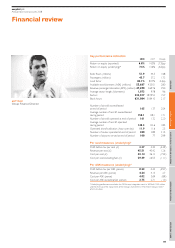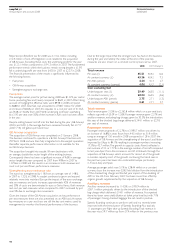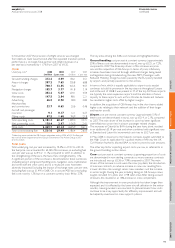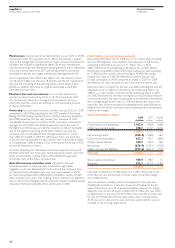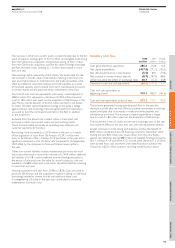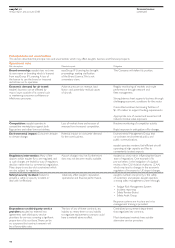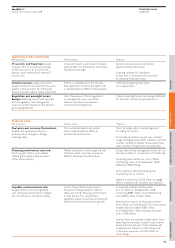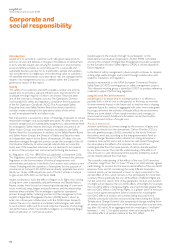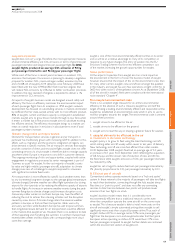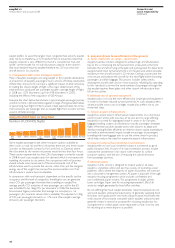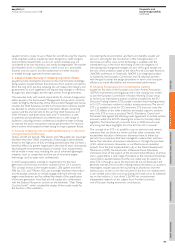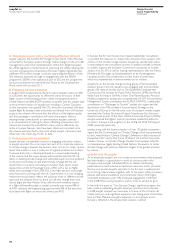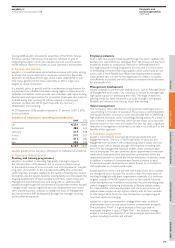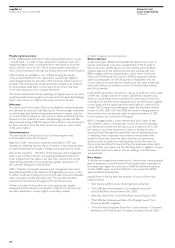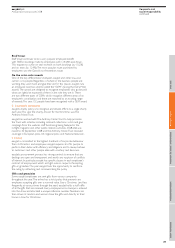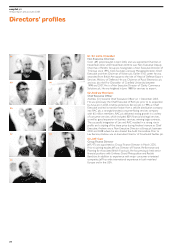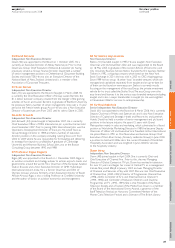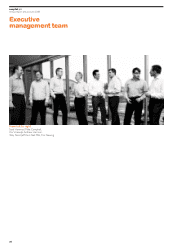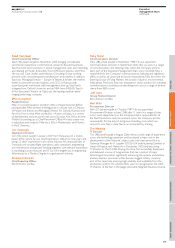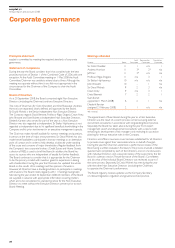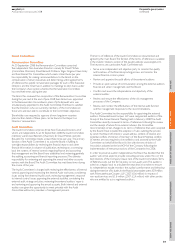EasyJet 2008 Annual Report Download - page 21
Download and view the complete annual report
Please find page 21 of the 2008 EasyJet annual report below. You can navigate through the pages in the report by either clicking on the pages listed below, or by using the keyword search tool below to find specific information within the annual report.
OverviewDirectors’ reportReport on Directors’ remunerationFinancial informationOther information
19
easyJet plc
Annual report and accounts 2008
Corporate and
social responsibility
continued
Considering the environmental (and fuel burn) benefits, easyJet will
persist in pressing for the introduction of the next generation of
short-haul aircraft as soon as the technology is available, with the
immediate focus in the short term being on the risk mitigation of
introducing step-change technologies. As part of this goal easyJet was
the only airline invited to speak at the New Aircraft Concepts Research
(NACRE) conference in Greenwich. NACRE is an integrated project
co-funded by the European Commission and 36 industrial partners
with the goal to break the design boundaries in terms of air transport
efficiency, air travel affordability and environmental performance.
B. Shaping European policy on emissions trading
easyJet has the chair of the European Low Fares Airlines Association
(ELFAA) environment working group and in that capacity was invited
to join the European Commission's Aviation Working Group set-up
to review how international aviation could be included into the EU
Emissions Trading Scheme (ETS). easyJet considers that including aviation
in EU ETS is the best solution to address aviation emissions. The aim of
ETS is to establish a price for CO2emissions. ETS does not cover the
non-CO2effects of any other industries and easyJet supports aviation’s
entry into ETS as soon as practical. The EU Presidency, Council and
Parliament have agreed the Working Level Agreement to include aviation
emissions within the EU ETS, allowing the Council to formally adopt
legislation. The Directive will come into force in 2009 and will cover
all arriving and departing flights from the EU from 2012 onwards.
The concept of an ETS is to establish a cap on emissions and reward
operators that can abate at a lower cost than other companies that
exceed their allocation of emissions allowances have to either buy
permits from companies that have managed to reduce their emissions
below their allocation of emissions allowances or through the purchase
of EU carbon emissions allowances, or certified emission reduction
projects from the Joint implementation (JI) or the Clean Development
Mechanism (CDM). The benchmark of Revenue Tonne Kilometres
internalises most of the aspects of the environmental efficiency of airlines
and is supported by a wide range of evidence as the most environmentally
sound metric. easyJet believes that the only viable way for aviation to
enter ETS is through a cap at EU level. Aircraft are not fixed plant and
generally operate across borders, making national allocations (or auctions)
meaningless. easyJet opposes the auctioning of allowances since the
ability to pass on the cost to the consumer in the short to medium term
is very limited and so the cost of auctioning will simply act as an additional
tax on the industry (a “cost shock”). ELFAA has commissioned
independent research on this subject from Frontier Economics,
one of Europe’s leading economics consultancies.
easyJet monitors closely its use of fluids for aircraft de-icing. The majority
of de-icing fluid used by easyJet has been designed to meet stringent
environmental requirements (i.e. do not contain triazole) and are
considered to be non-hazardous and readily biodegradable. The transfer
and shipment of oils is maintained to a level as low as is practicable.
Solvents and oils used in aircraft maintenance are either recycled
or treated through approved licensed operators.
3. easyJet leads the way in shaping a greener future
easyJet has been leading the response to the environmental challenges
facing aviation. easyJet believes that emissions from aviation will need to
fall in the long term, but that achieving this will require the industry and
governments to work together. It will require step changes in efficiency,
through new technologies, and the right policies from governments.
The executive body with overall responsibility for climate change policy
within easyJet is the Environment Management Group, which currently
meets fortnightly. Membership of the Environment Management Group
includes the Chief Executive and the Communications Director. easyJet
has decided to actively participate in the public debate concerning
aviation and the environment. To this aim the Chief Executive and
other Directors have given print, radio and TV interviews as well
as speeches and presentations at conferences to a wide range of
audiences (including, investor conferences). easyJet has been working
to improve the policy instruments used by governments. The sections
below outline what easyJet has been doing to shape a greener future.
A. Actively engaging with aircraft manufacturers to influence
next generation technology
Today’s aircraft are typically 70% cleaner and 75% quieter per passenger
kilometre than their 1960s counterparts. Technological advancements,
driven by the high price of fuel, are being planned today that will have a
beneficial effect of a greater magnitude in the next 40 years, dramatically
decreasing the environmental impact of aviation. Such advancements
will be made in many ways including the use of advanced lightweight
materials (such as composites) and the use of innovative engine
technology (such as open-rotor architecture).
In 2007, easyJet publicly outlined its requirements for the next
generation of short-haul aircraft for operation from 2015 onwards.
This concept, known as the easyJet ecoJet is 25% quieter and emits
50% less CO2and 75% less NOxper passenger kilometre than today’s
aircraft. easyJet continues to actively engage with both airframe and
engine manufacturers and has refined key details of the specification
of the next generation short-haul aircraft. easyJet also collaborated
with the Science Museum in London on the exhibition “Does Flying
Cost the Earth?”, which included the display of the ecoJet model for
the duration of the exhibition.


